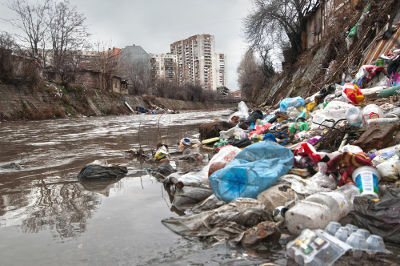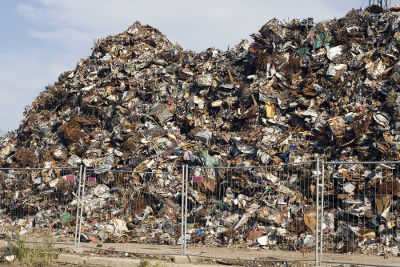Since the constitution of industrial modernity, cities have represented the main centers economic, social and geographic areas of the world, clustering around it most investments and services. In addition, according to the UN, since 2007, the number of people living in urban spaces has surpassed the inhabitants residents in rural areas, something already common in developed countries and even in many emerging countries, including the Brazil.
However, this urban development is accompanied by a series of problems, including those of an environmental nature. Nevertheless, the pollution in urban centers it became one of the most evident problems to be faced in the spheres of quality of life in cities and also in the preservation of the natural environment. The high emission of toxic pollutants into the atmosphere, in addition to the degradation of natural forest and water resources, constitute some of the main challenges to be overcome.
In this sense, we can list three main types of urban pollution
to be tackled or reduced: air pollution, water pollution and soil pollution and degradation. Attenuating the effects of these anthropic actions in the space of cities is of fundamental importance to guarantee what is called urban sustainability, that is, the promotion of urban development that does not compromise the environment for future generations.Air pollution in cities
Air pollution is one of the main aggravating factors for the reduction in the quality of life in many cities on the planet, and this includes even urban centers in developed countries. The city of Paris, for example, decreed, in March 2015, the temporary implementation of a car rotation system based on the atmospheric pollution beyond acceptable limits. Similar problems are reproduced in countless other great capitals of the world.
In Brazil, metropolises and large capitals also face the same problems. In the city of São Paulo, according to estimates made by environmental NGOs, there are 20% more chances of suffering from lung cancer compared to less polluted spaces. All this caused by the excess of vehicles, industries and other social elements that emit a large amount of toxic pollutants into the atmosphere.
Air pollution in urban centers is also intensified by the removal of vegetation, in the sense that areas trees or large reserves are eventually replaced by paved streets and mobility infrastructure such as the viaducts. And that's not to mention urban expansion areas, which are also increasingly degraded in their natural landscape. Another "villain" is the thermal inversion, a natural atmospheric phenomenon common on winter days and cold mornings that makes it difficult for pollutants to disperse.
Water pollution in cities
THE Water pollution, especially in river courses, occurs in various ways. One of them is the excessive pollution and bad destination of garbage in the physical space of the city itself, which necessarily integrates a specific hydrographic basin. Thus, in times of rain, all the garbage accumulated in the streets and sidewalks is drained towards the course of a river, which becomes unusable.
Furthermore, the lack of structure or incorrect planning in the destination of solid waste also intensify the problem. Sewage networks often do not have water treatment and destination stations, depositing all the material in large rivers and even in the seas, in the case of coastal cities. This, in addition to compromising the availability of drinking water, harms the preservation of animal species and ecosystems.
Also noteworthy in this context is the irregular direct disposal of garbage in the bed of watercourses, which is permeated by a bad individual and collective awareness of the population and also for a fragile policy of inspection and preservation of natural resources in many counties.
The costs for the complete depollution of these rivers become impractical for most public administrations, which makes the problem even more serious in the urban geographic space.

Illegal disposal of garbage in waterways in urban centers is a very common practice
Urban land pollution
The soil in the space of cities also ends up being the target of high pollution, which occurs mainly due to the erroneous management of solid waste. In dumps and in landfills, the accumulation of urban garbage generates a polluting liquid called “slurry”, which infiltrates and makes the soil unproductive. Furthermore, when it reaches the water table, this form of pollution also compromises the availability of water.
This problem can be tackled with the extinction of dumps – something officially carried out in Brazil in 2014, but still very present in practice – and dissemination of policies for recycling or reusing materials disposables. In Brazil, these procedures are covered by the National Solid Waste Policy, but they still pose as major challenges to be overcome.

The accumulation of waste in landfills and landfills compromises urban soils
By Me. Rodolfo Alves Pena
Source: Brazil School - https://brasilescola.uol.com.br/geografia/poluicao-nos-centros-urbanos.htm
